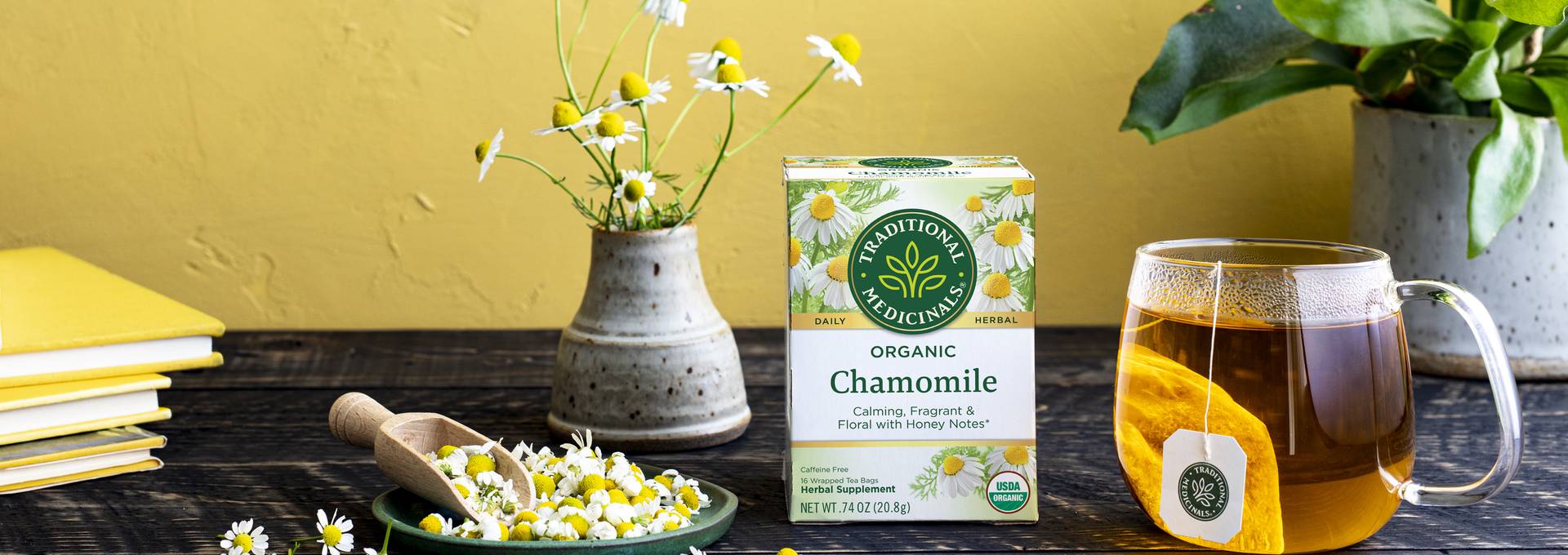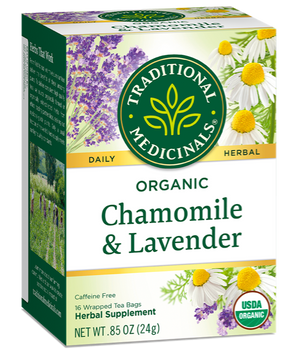Chamomile 101
Like a humble daisy, the tiny chamomile flower doesn’t claim much spotlight, but its impact on herbal medicine and folklore is undeniable and enduring. For many people, a simple chamomile...

Utilized in many households to comfort bellies and induce relaxation, a simple cup of chamomile tea may be one of the most common staples of household herbalism.

Our herbalists blend this soothing, gentle and aromatic trio of herbs—chamomile, lavender and lemon balm—to help calm frazzled nerves and ease tension.* High in essential oils, our herbs hail from organic farms, from Bulgaria’s idyllic meadows to Egypt’s fertile Nile Valley.
As many pioneering experimenters have learned over time, simply soaking the fragrant flowers of chamomile in hot water or alcohol produces an elixir that has the ability to both calm the body and soothe occasional digestive troubles.* It is this dual affinity towards both the nervous and digestive systems which makes chamomile ideal for times when the effects of momentary nervousness or anxiety are felt in the belly.*
As a nervine and mild herbal sedative, chamomile is a comforting bedtime companion to support sleep and restlessness, while its antispasmodic and carminative characteristics soothe occasional cramps in the gastrointestinal tract and can assist with uncomfortable gas, flatulence, and overall digestion.*
Chamomile’s apple-y aromatics first gave the herb its common name, derived from the original Greek chamaimēlon, or “earth-apple.” Ancient cultures were the first to sing the herb’s praises. The ancient Greek physician Dioscorides and naturalist Pliny the Elder prescribed it, Egyptian women mixed it with crushed rose petals to apply to their skin, and before modern preservation techniques were available, cooks soaked rancid meat in chamomile to mask unpleasant odors. In the Middle Ages, when hygiene was particularly difficult, people scattered chamomile on floors to help repel vermin and pests and to serve as a natural deodorizer. For hundreds of years, farmers have planted chamomile as a cover crop to attract beneficial insects and repel the pesky ones.
Throughout history, herbalists and physicians used chamomile for a variety of reasons. The ancient Greeks used it to support women’s health, the Egyptians used it to mummify bodies, and the Anglo-Saxons considered it one of their nine sacred herbs. By the Middle Ages, monks narrowed in on chamomile’s ability to soothe digestion and calm the nerves, and herbalists recommend it for those same reasons today.*
Chamomile is a wonderfully supportive herb that calms your nerves and supports healthy digestion.*
